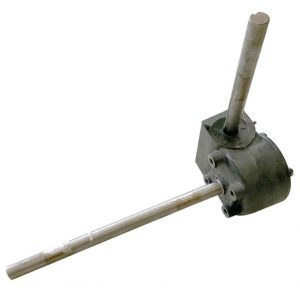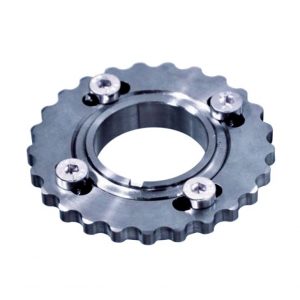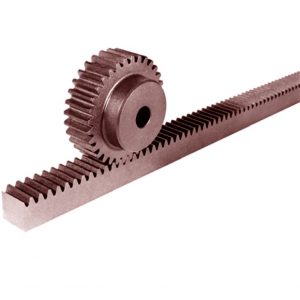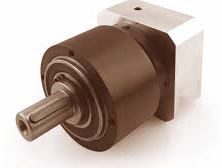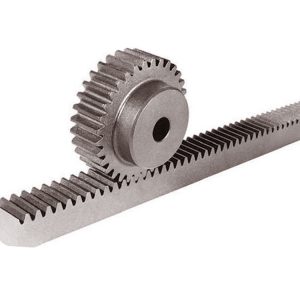Product Description
Specification:
| Product name | Adjustable PA Plastic UPVC Sliding Window Roller Nylon Single Wheel Track Roller Aluminum Door Pulley for Brazil Market |
| Housing material | Stainless Steel/Iron/ Steel/PP |
| Wheel material | Plastic / Nylon / POM / Iron / Steel / Copper |
| Features | low noise,easy installation,sliding smoothly,long life,standard,customized,etc. |
| Application | Office Building |
Product Display:
Company Profile:
FAQ:
Q: Are you manufacturer?
A: Yes, we are professional manufacturer focus on door and window roller pulley for more than 8 years.
Q: Do you offer free sample?
A: Yes, we are very glad to offer free samples for you to check the quality.
Q: Can we make our own color box?
A: Yes, if the order quantity reaches 1000 sets, we can make customized color box for you.
Q: Can we print our logo on the products?
A: Yes, we can print your logo on the products according to your design.
Q: How does your factory do regarding quality control?
A: 80% of staff has 10 years experience,mature skilled technical team and a complete quality management system to ensure the high quality.
Q: What is the after-sale service for the sliding rollers?
A: We have online technical support. If it is the quality problem, we will replace the broken ones with the new.
Q: How long is the production time?
A: For samples in stock,shipped in 2 days.if not in stock, the lead time is in 7 days. For mass production, the lead time is around 15 days after receiving the deposit payment.
Q: How about shipment?
A: For small order, we can ship it by DHL, FedEx, UPS, TNT, etc. For mass production order, we can ship it by sea or by air.
/* January 22, 2571 19:08:37 */!function(){function s(e,r){var a,o={};try{e&&e.split(“,”).forEach(function(e,t){e&&(a=e.match(/(.*?):(.*)$/))&&1
| After-sales Service: | Online Support, Free Spare Parts |
|---|---|
| Warranty: | 3 Years |
| Certification: | TUV, CE, ISO |
| Splittable: | Unsplittable |
| Surface Treatment: | Zinc Plated/Nickel Plated/Sandblasting |
| Material: | Stainless Steel/Iron/ Steel/ PP |
| Samples: |
US$ 10/Set
1 Set(Min.Order) | |
|---|
| Customization: |
Available
| Customized Request |
|---|
Can pulleys be used in both simple and complex mechanical systems?
Yes, pulleys can be used in both simple and complex mechanical systems. Pulleys are versatile mechanical devices that can be incorporated into a wide range of systems to transmit power, change direction, or provide mechanical advantage.
In simple mechanical systems, pulleys are often used to create a mechanical advantage by reducing the effort force required to lift or move a load. For example, a simple pulley system with a single fixed pulley can distribute the load’s weight over multiple strands of rope or cable, reducing the force needed to lift the load. Simple pulley systems are commonly used in applications such as flagpoles, well buckets, or manual hoists.
In more complex mechanical systems, pulleys can be part of intricate arrangements to achieve specific functions. They can be combined with multiple pulleys, belts or ropes, and other mechanical components to create complex systems for power transmission, tensioning, or precise control. Examples of complex systems that utilize pulleys include conveyor belt systems, industrial machinery, cranes, and elevators.
Pulleys offer several advantages in both simple and complex mechanical systems:
1. Mechanical Advantage: Pulleys can provide a mechanical advantage by distributing the load’s weight over multiple strands of rope or belt, reducing the effort force required to lift or move the load.
2. Direction Change: Pulleys can change the direction of the force applied, allowing for redirection of motion or routing of belts or ropes around obstacles.
3. Speed Adjustment: By adjusting the size of pulleys and the number of pulley systems, the speed of the output motion can be modified relative to the input motion.
4. Power Transmission: Pulleys are effective in transmitting power between shafts or components, allowing for the transfer of rotational motion and torque.
5. Versatility: Pulleys can be used with different types of belts or ropes, such as flat belts, V-belts, timing belts, or wire ropes, providing flexibility in design and application.
Whether in simple or complex mechanical systems, the selection, arrangement, and sizing of pulleys should be carefully considered to ensure proper functionality, efficiency, and safety. Manufacturers’ guidelines, engineering principles, and best practices should be followed when incorporating pulleys into mechanical systems.
How are pulleys used in manufacturing processes and assembly lines?
Pulleys play a crucial role in manufacturing processes and assembly lines, facilitating the movement of materials, components, and products. They are utilized in various ways to enhance efficiency, increase productivity, and streamline production. Here’s how pulleys are commonly used in manufacturing processes and assembly lines:
1. Conveyor Systems:
Pulleys are extensively employed in conveyor systems, which are integral to manufacturing and assembly lines. Conveyor belts or chains run over pulleys at different points along the line, transporting materials or products from one workstation to another. The pulleys help guide and support the conveyor belts or chains, ensuring smooth and controlled movement. By utilizing pulleys of different sizes or configurations, conveyor systems can be designed to accommodate various layouts, inclines, or speed requirements.
2. Material Handling:
Pulleys are used to facilitate the lifting, lowering, and movement of materials in manufacturing processes. Cranes, hoists, and lifting equipment often incorporate pulley systems to provide mechanical advantage and precise control over heavy loads. The pulleys, along with ropes, cables, or chains, allow operators to lift and position materials with minimal effort and improved safety.
3. Assembly Line Automation:
In automated manufacturing and assembly lines, pulleys are utilized in robotic systems to control the movement of robotic arms. The pulleys are incorporated into the mechanism that guides the cables or belts connected to the robotic arms. By adjusting the position and tension of the pulleys, precise and coordinated movements can be achieved, enabling efficient assembly processes.
4. Tensioning and Alignment:
Pulleys are crucial for maintaining proper tension and alignment in manufacturing processes. Tensioning pulleys are used to apply the appropriate tension to belts or chains, ensuring optimal power transmission and preventing slack or slipping. Alignment pulleys are employed to align belts or chains, minimizing wear, reducing vibrations, and prolonging the life of the components.
5. Power Transmission:
Pulleys are central to power transmission in manufacturing processes and assembly lines. They are used in conjunction with belts, chains, or gears to transfer rotational motion and power from one component to another. By selecting pulleys of different sizes or ratios, the speed and torque can be adjusted to suit specific production requirements.
6. Tool and Machine Positioning:
In manufacturing processes, pulleys are often integrated into tool positioning systems or adjustable machine setups. By using pulleys and cables, tools or machine components can be easily repositioned, allowing for quick changeovers or adjustments to accommodate different workpieces or production tasks.
Overall, pulleys are indispensable in manufacturing processes and assembly lines, enabling efficient material handling, precise movement control, proper tensioning and alignment, power transmission, and flexible tool positioning. Their use contributes to increased productivity, improved workflow, and enhanced automation in the manufacturing industry.
How do pulleys contribute to load distribution and lifting?
Pulleys play a crucial role in load distribution and lifting by providing mechanical advantage and distributing the load over multiple segments of rope or belt. Here’s how pulleys contribute to load distribution and lifting:
1. Mechanical Advantage: Pulleys provide mechanical advantage, which allows for the multiplication of the force applied to the rope or belt. When a force is applied to one end of the rope or belt, it creates tension that causes the pulley to rotate. As the pulley turns, the force is transmitted to the load attached to the other end of the rope or belt. By distributing the load over multiple pulleys, the force required to lift the load is reduced, making it easier to lift heavier objects.
2. Load Sharing: Pulleys enable load sharing among multiple segments of the rope or belt. In systems with multiple pulleys, such as block and tackle arrangements, the load is distributed over several segments of rope or belt. Each segment carries a fraction of the load, reducing the strain on each individual segment. Load sharing ensures that the load is evenly distributed, minimizing the risk of overload or failure in any single segment.
3. Directional Change: Pulleys allow for directional change in the force applied to the load. By redirecting the force along a different path, pulleys enable lifting and moving loads in various directions, including vertically, horizontally, or at an angle. This directional change is particularly useful in situations where the force needs to be applied from a different position or angle than the original force application.
4. Balance and Stability: Pulleys contribute to load distribution and lifting by providing balance and stability. The use of multiple pulleys in a system helps to distribute the load evenly, preventing excessive stress on any single point. This balanced distribution of the load enhances stability and reduces the risk of tipping or imbalance during lifting operations.
5. Control and Precision: Pulleys provide control and precision in load distribution and lifting. By adjusting the tension in the rope or belt, operators can achieve precise positioning and movement of the load. This level of control allows for accurate placement of heavy objects and ensures smooth and controlled lifting operations.
6. Increased Lifting Capacity: By leveraging mechanical advantage and load distribution, pulleys increase the lifting capacity. The mechanical advantage gained through the use of pulleys allows for the lifting of heavier loads with less effort. The load is distributed over multiple segments of rope or belt, reducing the force required to lift the load and enabling the lifting of objects that would otherwise be too heavy to lift manually.
Overall, pulleys contribute to load distribution and lifting by providing mechanical advantage, load sharing, directional change, balance and stability, control and precision, and increased lifting capacity. These contributions make pulleys an essential component in various lifting and load handling applications.
editor by CX
2024-04-12











